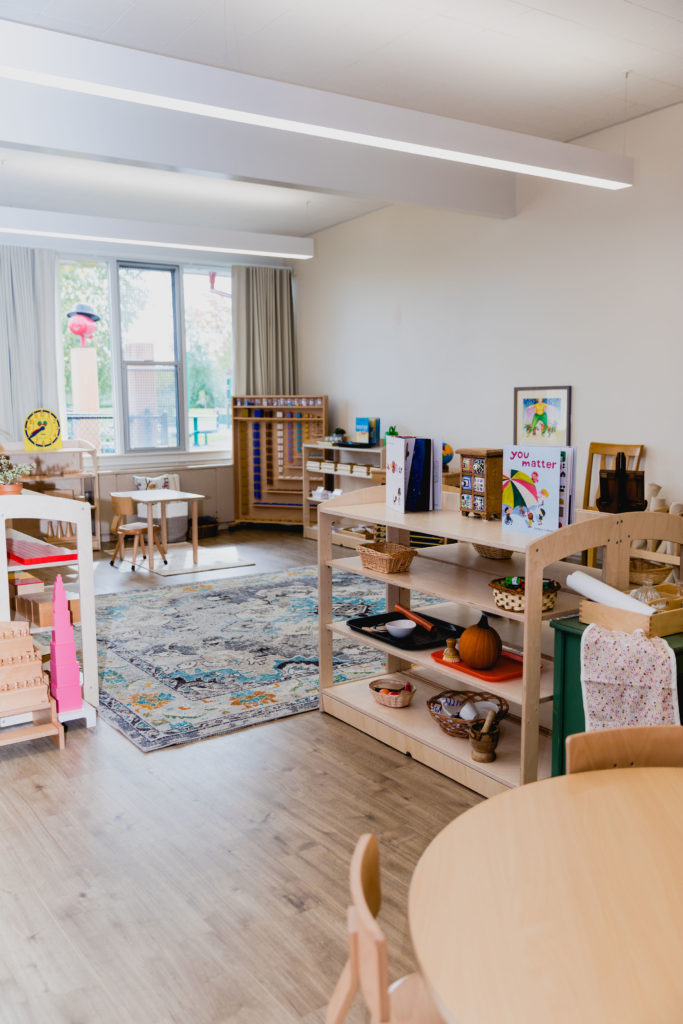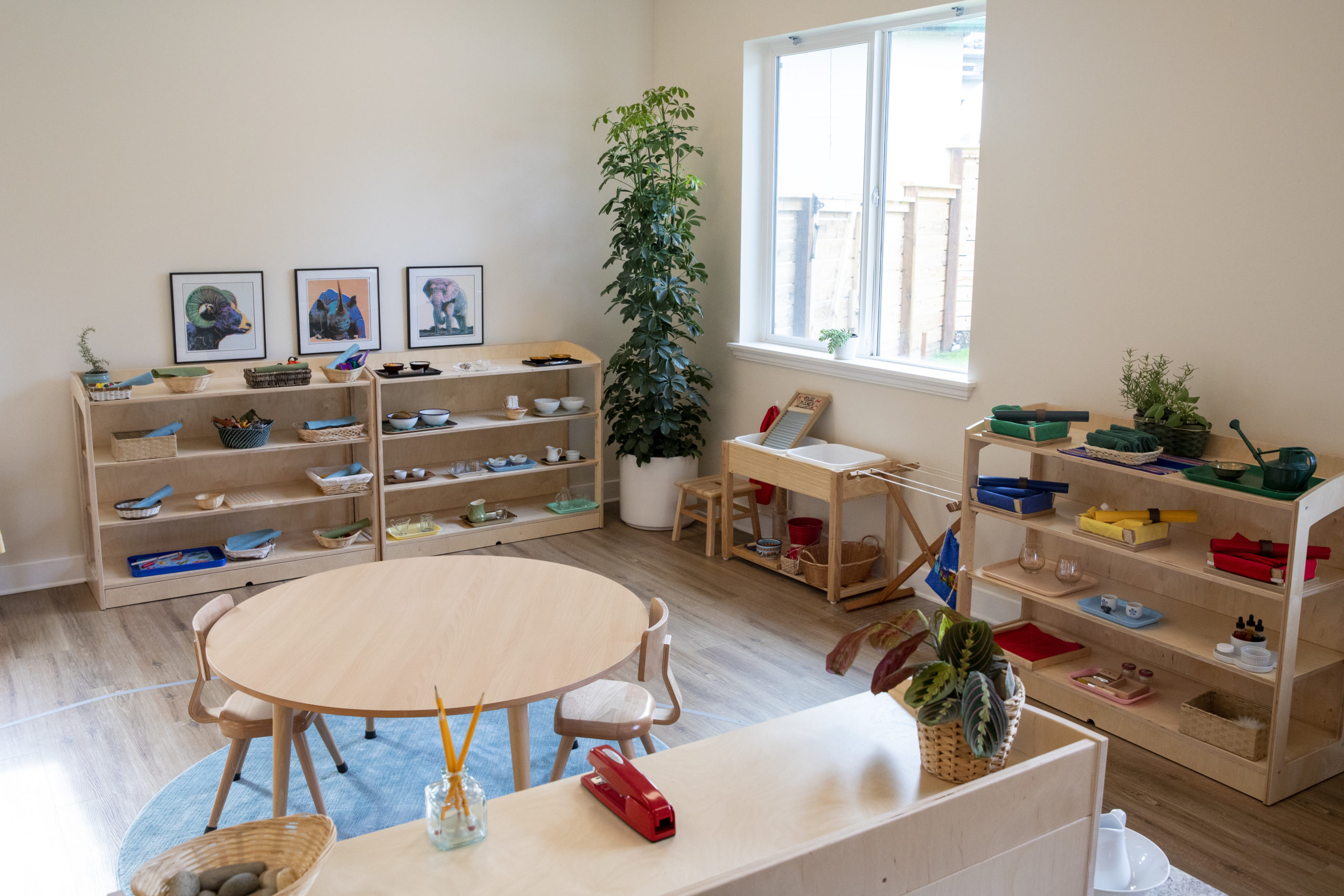Earlier this year, Forefront Living announced a 10-year lease agreement to open a tuition-free, Montessori-inspired Bezos Academy preschool adjacent to its Presbyterian Village North community in Dallas. Bezos Academy, named for Amazon Founder and former CEO Jeff Bezos, currently has 21 such preschools that are either open or planned across the U.S.
With the move, the Dallas-based nonprofit is set to become the first senior living community in Texas and the second in the U.S. to open a Bezos Academy on its campus.
It is also deepening the organization’s commitment to intergenerational programming and strengthening its mission of being a community resource, according to Forefront Living CEO Tim Mallad.
“The commitment to intergenerational programming is a commitment that we’ll maintain no matter where we go,” Mallad said during a recent appearance on the Senior Housing News podcast, Transform. “That’s just part of our DNA and who we are.”
No doubt, Forefront Living encountered challenges related to the pandemic, as all senior living operators have. But with occupancy holding steady, Mallad said his biggest worry looking ahead is not census or staffing, it’s meeting the needs of the baby boomer generation and capturing that opportunity.
“There is pent-up demand for what we do, and in a population that wants the services, I am probably more worried about how we capture that appropriately,” Mallad said.
Highlights of Fischer’s podcast interview are below, edited for length and clarity. Subscribe to Transform via Apple Podcasts and SoundCloud.
On Forefront Living’s Bezos Academy collaboration
One of the pillars of our strategic plan is to be a community resource. So, not just the organization that takes from the community, but the organization that gives back and shares who we are.
And as the board approved that initiative, an email went out from George Linial, who’s the executive director for LeadingAge Texas, saying that the Bezos Academy was looking for sites in Texas; in particular, Dallas, and Houston.
[We have] a campus on 66 acres with a number of buildings that are for different phases of life. We had a building that we were transitioning healthcare out of that was originally designed for adult daycare and we had opened up two wings there. And lo and behold, this request came out and it was just this perfect fit. The building was already designed with common areas and rooms that can be used as classrooms. So, it just fit with our mission vision, and our values.
We have this very active, independent resident population that has been out the entire time volunteering. Probably three years ago or so – maybe four now – the residents had developed a relationship with one of the schools in Dallas through a pen pal program.
So, there had already been a precedent on our campus of residents working with children, who were learning cursive writing and writing letters. We saw from that activity — which is still going on today — the joy between the two groups of individuals. [We see] the growth in the children and the happiness in the residents for having those relationships. So I saw this and I thought, gosh, we already know how good that interaction is. What a perfect fit.
It’s the art of the possible. I think anything is possible with them on our campus now. They’re coming to us with our arms wide open, and what’s nice is, the teammates and the management team at Presbyterian Village North have a tremendous programming department, and there are just so many ideas.

I hope that Bezos Academy will be patient with us as we look forward to ways that we can promote that relationship.
The Bezos Academy drives where their locations are, and what the criteria are. But the commitment to intergenerational programming is a commitment that we’ll maintain no matter where we go – Plano, San Antonio, Tarrant County, et cetera. So that’s just part of our DNA and who we are.
On labor challenges and prioritizing culture
I think it’s that it’s not just Forefront Living, it’s the entire industry. One of the takeaways that I have is a lot of us are focused on dollars and cents, and making it a wage issue. We’re looking at it from the cultural side: what can we do related to the work environment and the employment experience to become an environment where people choose to work? The labor pool is different, people are working differently.
We’ve always had a strong commitment to culture, teammate empowerment and teammate growth, so we’re looking at it that way. And at the same time, the residents and the services they’re expecting are evolving, as are what the teammates want. So that’s all coming together. And we’re hitting it from a vantage point of creativity. And, again, I said, the art of the possible earlier – it’s the same way.
I think we’re looking in some ways at a generation of future teammates that is motivated differently, and it’s not entirely dollars and cents, but having a sense of meaning in the work they do. So, having that relationship and that ability to interact. It’s not that much different than what we talked about with Bezos [Academy]. There is very much a reciprocal relationship between interactions t between a teammate and resident. I think both walk away stronger.
There has been more than a little bit of feedback from people not wanting to be boxed in by a position. ‘Why am I just the driver? Why do I just work in maintenance? Why can’t I work in multiple areas and have different experiences?’ So, having that flexibility in your workday, I think that’s something that we’re deep into exploring.
On using technology:
One of the things that kept this organization strong [throughout the Covid-19 pandemic] was communication and direct communication with residents, teammates and family members. Like the rest of the world, at the beginning of the pandemic, we discovered Zoom. But we also discovered a number of different ways to keep individuals informed.
Residents especially have become very comfortable in a virtual format. And that was something that we were anticipating, but we were trying to overcome the hurdle of the training piece of it.
So we’ve now got this platform where we can engage people electronically, communicate to them in real-time, and they still want the face-to-face more than anything.
But also, there has been this really interesting reliance upon Alexa for reminders, and for ordering. We’re really shifting our platform. [As for] robotic delivery of services, not so much, at least right now because of that strong desire for that face-to-face interaction.
I think probably most people have Zoom fatigue right now, and are a little tired of the virtual environment. But it really enabled us to be nimble and act in real-time. In many ways, we switched to a virtual platform, on the marketing and sales side, in the first week of the pandemic. I always look back and say that that’s really what helped save this organization, and helped it prosper. Because people still wanted the connectivity. They still wanted the information. But there’s nothing like looking somebody in the eye whether it’s through a screen or face-to-face.
On branching out into other service lines:
We’ve had our eye on home health and even private duty — more private duty, I would say, than home health during the pandemic. I think in our industry, one of the biggest risk factors of the unknowns were the people that were coming into the communities from outside, [from home care agencies] that are serving residents. It really opened our eyes to the need to help manage that.
Number one, when they didn’t show and residents were looking for services, it came back to us to help provide the services, anything from meal delivery to any sort of additional assistance with housekeeping.
During the pandemic, common areas were closed, obviously, [and] staffing fluctuated. So, that led to the thought that there’s a need for that. There’s also a need to look beyond the traditional service platform. And as we come out of this, residents are really looking at a very customizable level of services. They’re not necessarily looking for one meal per day, weekly housekeeping, et cetera, they’re looking for this individualized platform. So that’s helped us look at how we rethink services in general than how we deliver them. Obviously, we have hospice, and it’s got a large home-based platform, which for us is great because it’s a springboard into private duty or even home care.
On resident preferences in the future:
We had an event for future residents at The Outlook at Windhaven. The new prospective residents were most interested in meeting each other and very desirous of community. And I think as people were isolated in their homes — even healthier seniors where before the pandemic, there was maybe an attitude that “I’m going to stick this out at home, and I’m not going to leave home,” — there’s now an attitude that “I really want community, I want face to face interaction, I want neighbors.”
On offering wellness during the pandemic:
We have north of 80 to 85 wellness-related programs going on at any given time. We’ve been very fortunate, especially at Presbyterian Village North, to have a wellness center with a team that is really holistically focused on wellbeing.
And it was really interesting during the pandemic, that of any services that we had – whether it was dining, any activity related things, even the beauty and barber shop – it was access to the exercise room and access to the swimming pool that was the most important to the people we were serving. And it was the one service that we had to figure out how to deliver to them, whether the exercise was virtual or you gathered out on the lawn for exercise, or we had three people in an Olympic-sized swimming pool socially distance doing multiple types of exercise.
And I would say that that desire for a healthy lifestyle has only increased and is probably among the number one ask and expectation of the people we serve across the continuum.
We just don’t focus on the swimming pool or the exercise equipment, which are very important and which we invest heavily in – but we also want to connect the community to nature and to outdoor activity. So each time we look at a site, that’s one of the very first things I do: What is it adjacent to? How is it walkable? What outdoor spaces are the potential for residents?
On the outlook for 2022:
I’m probably worried about how much opportunity there is. We are on the cusp of so much good change, so much desire to do things in a new way. I think there is pent-up demand for what we do, and in a population that wants the services, I am probably more worried about how we capture that appropriately. I personally enjoy seeing people satisfied and happy. So, my eye is very much toward the future and how bright it is and how much opportunity there is. And I want the folks that need the services to be served in the right way in a good way.



